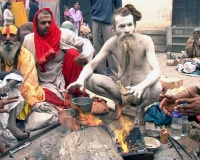Pashupata Shivaismus: Unterschied zwischen den Versionen
Adm1 (Diskussion | Beiträge) |
Adm1 (Diskussion | Beiträge) |
||
| Zeile 22: | Zeile 22: | ||
* Hinduismtoday about the [http://www.hinduismtoday.com/modules/smartsection/item.php?itemid=3246 Pashupatas] | * Hinduismtoday about the [http://www.hinduismtoday.com/modules/smartsection/item.php?itemid=3246 Pashupatas] | ||
* en Wiki about [//en.wikipedia.org/wiki/Pashupata_Shaivism Pashupata Shaivism] | * en Wiki about [//en.wikipedia.org/wiki/Pashupata_Shaivism Pashupata Shaivism] | ||
* [//sivasakti.net/articles/tantra/kashmiri-shaivism-art149.html | * [//sivasakti.net/articles/tantra/kashmiri-shaivism-art149.html The Pashupata Shaivism] | ||
<br> | |||
<historylink type="back" style="font-family: Arial, Helvetica, sans-serif; | |||
font-size: 14px; color: #ffffff; padding: 4px 8px; float:right; | |||
background: -moz-linear-gradient( top, #fcf9fc 0%, #6a75eb); | |||
background: -webkit-gradient( linear, left top, left bottom, | |||
from(#fcf9fc), to(#6a75eb)); | |||
-moz-border-radius: 30px; -webkit-border-radius: 30px; | |||
border-radius: 30px; border: 3px solid #ffffff; | |||
-moz-box-shadow: 0px 3px 11px rgba(240,237,240,0.5), | |||
inset 0px 0px 1px rgba(000,145,255,1); | |||
-webkit-box-shadow: 0px 3px 11px rgba(240,237,240,0.5), | |||
inset 0px 0px 1px rgba(000,145,255,1); | |||
box-shadow: 0px 3px 11px rgba(240,237,240,0.5), | |||
inset 0px 0px 1px rgba(000,145,255,1); | |||
text-shadow: 0px -1px 0px rgba(000,000,000,0.2), | |||
0px 1px 0px rgba(255,255,255,0.3);" | |||
> zurück </historylink> | |||
[[Kategorie:Shivaismus]] | |||
[[Kategorie:Hinduismus]] | |||
Version vom 30. September 2013, 15:51 Uhr
Der Pashupata Shivaismus war die erste in der Literatur erwähnte shivaitische Gruppierung. Sie wird auch bei bei Patanjali, im Mahabharata und in der Vayuviha Samhita erwähnt.
Haupttexte sind Gaṇakārikā, Pañchārtha bhāshyadipikā sowie Rāśikara-bhāshya. Überlieferte spätere pätere Texte sind das Sarvadarshanasamgraha des Madhava und die Pashupata Sutras, welche Lakulisa zugeschrieben werden.
Die 5 großen Prinzipien sind
- Die Gottheit (Pati), auch Ursache (Karana) genannt.
- Karya - Stofflichkeit (Pasa, Kala), Seele (Pashu) und Wissen (Vidya) ist
- Yoga - Kontemplation.
- Vidhi - rechte Handlungsweise, religiöse Taten
- Dukhanta - Erlösung
Die Gruppierung war devotional(Shiva) und asketisch ausgerichtet. Der Pfad war nicht auf bestimmte Kasten begrenzt. Nach dem Glauben ist Gott (Shiva) Gnade, die die Seele vom Leiden erlöst, und die durch Yoga und rechtes Verhalten(Vidhi) erlangt wird.
Die Sadhana beginnt mit der Vertiefung eines ethischen Kodexes (yama, niyama) mit Betonung von brahmacarya (Abstinenz, Kontinenz), ahimsa (Nichtverletzen) und tapas (Askese), gefolgt von Bußübungen und Namah Shivaya Japa.
Literatur
- The Sutrapatha of the Pasupatasutra
- PETER BISSCHOP and ARLO GRIFFITHS, THE PASUPATA OBSERVANCE (ATHARVAVEDAPARISISTA 40)
Weblinks
- Pasupata Shaivism
- Hindupedia about Pasupata
- Hinduismtoday about the Pashupatas
- en Wiki about Pashupata Shaivism
- The Pashupata Shaivism
<historylink type="back" style="font-family: Arial, Helvetica, sans-serif;
font-size: 14px; color: #ffffff; padding: 4px 8px; float:right;
background: -moz-linear-gradient( top, #fcf9fc 0%, #6a75eb);
background: -webkit-gradient( linear, left top, left bottom,
from(#fcf9fc), to(#6a75eb));
-moz-border-radius: 30px; -webkit-border-radius: 30px;
border-radius: 30px; border: 3px solid #ffffff;
-moz-box-shadow: 0px 3px 11px rgba(240,237,240,0.5),
inset 0px 0px 1px rgba(000,145,255,1);
-webkit-box-shadow: 0px 3px 11px rgba(240,237,240,0.5),
inset 0px 0px 1px rgba(000,145,255,1);
box-shadow: 0px 3px 11px rgba(240,237,240,0.5),
inset 0px 0px 1px rgba(000,145,255,1);
text-shadow: 0px -1px 0px rgba(000,000,000,0.2),
0px 1px 0px rgba(255,255,255,0.3);"
> zurück </historylink>
